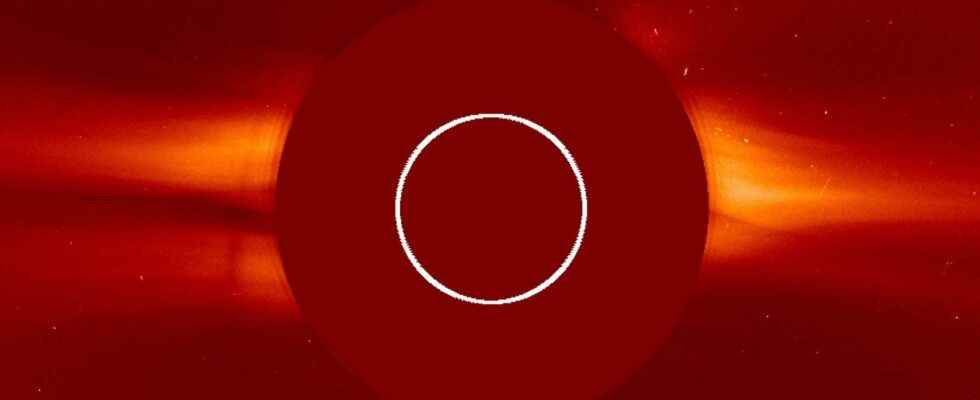After the first Chinese Chase solar telescope was put into orbit in October 2021, it will soon be the turn of the ASO-S telescope to leave to study the Sun from sun-synchronous orbit. It should take off in the spring.
You will also be interested
[EN VIDÉO] A giant solar flare unlike any we’ve ever seen This Tuesday, February 15, 2022, the space telescope named Extreme Ultraviolet Imager (EUI) on board the Solar Orbiter (ESA, NASA) recorded a giant solar flare. He was able, for the first time, to capture on the same image, the complete solar disk and the cloud of plasma ejected by the eruption up to 3.5 million kilometers in altitude. © ESA
Since the 1970s, China and its National Space Science Center have been interested in studying the Sun. The only experiments were observations of our star during manned missions Shenzhou. In October 2021, a rocket Long March 2D places in orbit sun-synchronous the Chase probe (Chinese H-α Solar Explorer), a small space observatory equipped with a spectro-imager to image the solar disk. If Chase is the first space telescope Chinese solar, it is more dedicated to surveillance. ASO-S is the first dedicated to the study of the Sun.
The project of telescope space ASO-S (Advanced Space-based Solar Observatory) was born in the early 2010s, from the remains of the Franco-Chinese project SMESE. This project is supported by the Chinese Academy of Sciences. Lift-off is scheduled for the spring, ASO-S will be placed in orbit sun-synchronous at 720 kilometers altitude. Among the planned Chinese space missions, there is also a solar probe project to study our star closer than terrestrial space, in the manner of Solar Orbiteror the Parker Solar Probe.
Magnetic fields and flares
ASO-S will first study the magnetism of the Sun. It is equipped for this with an instrument that will map the entire magnetosphere. The Sun exerts a strong magnetic activity on its surface. It is also because of numerous magnetic instabilities that the surface can enter into eddies, and even forcefully eject solar particles.
One of the goals of ASO-S: to study the link between solar magnetism and solar flares, including the largest ones, commonly called ” coronal mass ejections (EMC). To observe these different phenomena, ASO-S will be equipped with a camera as well as several telescopes.
This is a good time to study solar activity, which follows a cycle of about eleven in. A next peak of activity is expected in the next few years, testifying to numerous instabilities on the surface. After years of dead calm, the surface of the Sun becomes more and more restless.
Support an editorial team committed to popularizing science on Patreon!
Our mission ? Return the knowledge accessible to everyone.
We produce our own articles, investigations and reports every day, all on a human scale. Support us in this approach and this ambition.
Subscribe to Futura on Patreon!
Two subscription plans are offered to you with the following advantages:
- ” Futura ad-free »: get guaranteed ad-free access to the entire site for €3.29/month (+VAT).
- ” I participate in the life of Futura »: in addition to access without advertising, take part in the life of our independent media (votes, new content, surveys, etc.) for €6.29/month (+VAT).
Interested in what you just read?
